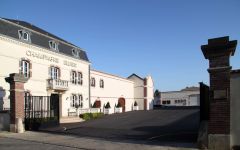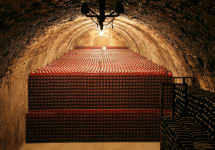Charles Ellner Champagne Brut Seduction 1996
-
Wine
Spectator


Product Details
Your Rating
Somm Note
Winemaker Notes
Professional Ratings
-
Wine Spectator
A classy, complex Champagne that hints at its potential with graphite, biscuit, honey and citrus flavors all set against a refined mousse. Beautifully integrated, with a firm structure binding the flavors and texture. Great length and harmony on the finish.






Champagne Charles Ellner, in the heart of Epernay, was and is a family business. At the end of the 19th century, Charles Emile Ellner, the founder of the House, began acquiring small vineyards in Epernay while also starting his career as a professional “riddler”. In 1905, he first released Champagne under his own name.
Today the house is run by Jean-Pierre Ellner, one of the grandsons of the estate’s founder. His nephews Frederic and Arnaud Ellner manage vineyards and production. His daughters Emmanuelle Foulon Ellner and Alexandra Ellner also work at the estate.
None of Charles Ellner’s wines see malolactic fermentation. All are fermented in stainless-steel tanks to preserve fresh fruit flavors (only the Chardonnay blended into the vintage wines spends a few months in giant oak barrels between primary fermentation and bottling). They are then left to sit on their lees for a minimum of 4 years (the law is only 18 months) to allow the wines to soften a bit, fill out, and become beautifully drinkable upon release yet ageable at the same time.

Representing the topmost expression of a Champagne house, a vintage Champagne is one made from the produce of a single, superior harvest year. Vintage Champagnes account for a mere 5% of total Champagne production and are produced about three times in a decade. Champagne is typically made as a blend of multiple years in order to preserve the house style; these will have non-vintage, or simply, NV on the label. The term, "vintage," as it applies to all wine, simply means a single harvest year.

Associated with luxury, celebration, and romance, the region, Champagne, is home to the world’s most prized sparkling wine. In order to bear the label, ‘Champagne’, a sparkling wine must originate from this northeastern region of France—called Champagne—and adhere to strict quality standards. Made up of the three towns Reims, Épernay, and Aÿ, it was here that the traditional method of sparkling wine production was both invented and perfected, birthing a winemaking technique as well as a flavor profile that is now emulated worldwide.
Well-drained, limestone and chalky soil defines much of the region, which lend a mineral component to its wines. Champagne’s cold, continental climate promotes ample acidity in its grapes but weather differences from year to year can create significant variation between vintages. While vintage Champagnes are produced in exceptional years, non-vintage cuvées are produced annually from a blend of several years in order to produce Champagnes that maintain a consistent house style.
With nearly negligible exceptions, . These can be blended together or bottled as individual varietal Champagnes, depending on the final style of wine desired. Chardonnay, the only white variety, contributes freshness, elegance, lively acidity and notes of citrus, orchard fruit and white flowers. Pinot Noir and its relative Pinot Meunier, provide the backbone to many blends, adding structure, body and supple red fruit flavors. Wines with a large proportion of Pinot Meunier will be ready to drink earlier, while Pinot Noir contributes to longevity. Whether it is white or rosé, most Champagne is made from a blend of red and white grapes—and uniquely, rosé is often produce by blending together red and white wine. A Champagne made exclusively from Chardonnay will be labeled as ‘blanc de blancs,’ while ones comprised of only red grapes are called ‘blanc de noirs.’
